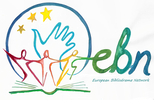What does bibliodrama want?
The science journalist Petra Herre on the bibliodrama (originally in german, translated by google translator)
Bibliodrama is a form of cultural education with biblical texts. At the same time, the bibliodrama can be assigned to the area of religious education beyond the usual course formats.
In the process of bibliodrama, the participants discover a biblical text by dealing with it in a playful or pictorial manner. They seek and try to relate themselves and their lives to such a text. At the end of such a process, the participants are made familiar with a biblical text and have appropriated it. You have participated in a number of scenic plays and can recall pictures. You will then decide whether you want to pursue this trail further.
In any case, you will have had experiences with yourself as a creative person in a group. And with enough time that such an intensive process needs, you will have discovered that your body with the experiences stored in it can also be a resonance space for texts and situations, and that it makes sense to pay attention to your body.
More important than verbal reflection and communication is the aesthetic design in scenic play, are visual, poetic or musical designs. There are also compelling approaches that work with photography. The following applies: Aesthetic design processes are clarification processes. I have to leave something out, change it, lock it up. This is promoted through accompanying body work and the exchange with others in small groups or plenary sessions.
Bibliodrama has been making a name for itself since the 1970s. This approach was later described as an attempt to open up the then encrusted and intellectual understanding of the Bible, to liquefy stuck narratives, and to playfully enliven the practice of Bible study by including other experience-based approaches.
One can distinguish three branches of bibliodrama: the aesthetic-hermeneutic, which is essentially influenced by theater and art education, the psychodramatic and the body-oriented.
In the present, the bibliodrama is described more as an experimental discovery and testing practice. For a certain period of time, the participants enter a text and tradition room with as many parts of their person as possible, so to speak on a trial basis.
It can appeal to people with very different previous experiences and religious traditions. And because aesthetic design is the essential medium, it is also suitable for groups with different languages.
Bibliodrama is a form of cultural education with biblical texts. At the same time, the bibliodrama can be assigned to the area of religious education beyond the usual course formats.
In the process of bibliodrama, the participants discover a biblical text by dealing with it in a playful or pictorial manner. They seek and try to relate themselves and their lives to such a text. At the end of such a process, the participants are made familiar with a biblical text and have appropriated it. You have participated in a number of scenic plays and can recall pictures. You will then decide whether you want to pursue this trail further.
In any case, you will have had experiences with yourself as a creative person in a group. And with enough time that such an intensive process needs, you will have discovered that your body with the experiences stored in it can also be a resonance space for texts and situations, and that it makes sense to pay attention to your body.
More important than verbal reflection and communication is the aesthetic design in scenic play, are visual, poetic or musical designs. There are also compelling approaches that work with photography. The following applies: Aesthetic design processes are clarification processes. I have to leave something out, change it, lock it up. This is promoted through accompanying body work and the exchange with others in small groups or plenary sessions.
Bibliodrama has been making a name for itself since the 1970s. This approach was later described as an attempt to open up the then encrusted and intellectual understanding of the Bible, to liquefy stuck narratives, and to playfully enliven the practice of Bible study by including other experience-based approaches.
One can distinguish three branches of bibliodrama: the aesthetic-hermeneutic, which is essentially influenced by theater and art education, the psychodramatic and the body-oriented.
In the present, the bibliodrama is described more as an experimental discovery and testing practice. For a certain period of time, the participants enter a text and tradition room with as many parts of their person as possible, so to speak on a trial basis.
It can appeal to people with very different previous experiences and religious traditions. And because aesthetic design is the essential medium, it is also suitable for groups with different languages.
